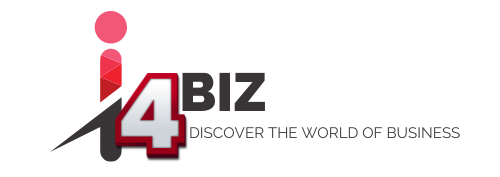Digitization in the mortgage industry marks a significant shift from traditional, paper-based processes to modern, digital operations. This transformation is crucial for mortgage businesses aiming to stay competitive and meet the evolving demands of the market. Embracing digitization not only streamlines operations but also enhances customer service and operational efficiency. This guide delves into the benefits of digitization and provides actionable insights on how mortgage businesses can leverage these advantages to maximize gains. Readers can expect a comprehensive exploration of digitization strategies, tools, and the profound impact these can have on the mortgage landscape.
Understanding Mortgage Digitization

Mortgage digitization involves using digital tools and technologies to streamline operations. This shift transforms traditional mortgage processes, making them faster, more efficient, and more responsive to customer needs. Digital platforms, automated tools, and advanced software are prime examples of this transformation. They revolutionize every aspect of the mortgage process, from application to closing. Digitization not only speeds up transactions but also enhances accuracy and transparency, paving the way for a more robust and customer-centric mortgage industry. Understanding these changes is the first step in harnessing the full potential of digital innovation in the mortgage sector.
Streamlining Loan Origination
Digitization greatly enhances the loan origination process. Digital documents, e-signatures, and online applications replace cumbersome paperwork, significantly increasing efficiency and reducing processing times. These digital tools facilitate quicker, more accurate data collection and processing, enabling mortgage professionals to focus on more strategic tasks. The streamlined approach not only improves operational productivity but also enhances the borrower’s experience, providing a smoother, more user-friendly journey. By adopting digital solutions, mortgage firms can significantly cut down on the time and resources typically required for loan origination, setting a new standard for speed and efficiency in the industry. It received an additional boost through the introduction of eNotes for Mortgage too.
Enhanced Customer Experience
Digitization radically improves the customer experience in the mortgage industry. Online portals and mobile apps offer borrowers unprecedented convenience, allowing them to apply for loans, submit documents, and track their application status from anywhere, at any time. Enhanced communication tools facilitate real-time updates and support, fostering a transparent and responsive relationship between lenders and borrowers. This digital approach caters to the modern consumer’s expectation for speed, convenience, and accessibility, significantly enhancing customer satisfaction and loyalty. As the industry continues to evolve, the customer experience remains at the forefront of digitization, driving continuous innovation and improvement.
Automated Underwriting and Risk Assessment

Digitization introduces advanced automated underwriting and risk assessment capabilities. Leveraging AI algorithms, credit scoring models, and comprehensive data analysis, these systems streamline the decision-making process, significantly reducing the time and effort involved in assessing borrower applications. Automation minimizes human error and ensures a more consistent, objective evaluation of risk factors. This not only accelerates the approval process but also enables lenders to manage their risk more effectively. By adopting these sophisticated digital tools, mortgage businesses can make more informed decisions, optimize their loan portfolios, and enhance their competitive edge in the market.
Efficient Document Management
Digital document management systems offer a multitude of advantages. They enable secure storage, easy retrieval, and effective management of mortgage documents, eliminating the inefficiencies associated with paper-based systems. Enhanced search capabilities and automated workflows ensure that the right information is available at the right time, significantly reducing bottlenecks and improving overall productivity. Robust security features protect sensitive information, ensuring compliance with industry regulations and giving both lenders and borrowers peace of mind. By transitioning to a digital document management system, mortgage businesses can achieve a higher level of operational efficiency and data security.
Compliance and Regulatory Benefits
Digitization greatly assists mortgage businesses in complying with ever-changing regulations. Real-time monitoring, automated audit trails, and streamlined reporting simplify adherence to industry standards and regulatory requirements. Digital solutions provide a transparent overview of operations, making it easier to identify and address compliance issues promptly. This proactive approach not only minimizes the risk of penalties and legal issues but also reinforces the company’s reputation as a trustworthy and compliant lender. In an industry where regulations play a crucial role, the ability to efficiently manage compliance through digitization is an invaluable asset.
Cost Reduction and Resource Optimization

Digitization leads to significant cost savings and resource optimization for mortgage businesses. By automating routine tasks and reducing the need for physical storage and manual processes, companies can cut down on staffing needs and overhead costs. Digital tools enable more strategic resource allocation, allowing firms to focus on growth and innovation rather than routine operations. The operational efficiency gained through digitization not only reduces expenses but also enhances the company’s agility, making it better equipped to respond to market changes and customer needs.
Data Analytics for Informed Decision-Making
Data analytics plays a pivotal role in the digitized mortgage industry. By harnessing the power of predictive analytics, mortgage businesses can gain insights into market trends, customer behavior, and potential opportunities. This data-driven approach enables lenders to make informed decisions, tailor their services to meet customer needs, and stay ahead of the competition. The strategic use of data analytics maximizes gains by identifying growth areas, optimizing operations, and enhancing the customer experience, making it an essential component of any successful digitization strategy.
Security and Fraud Prevention
As the mortgage industry embraces digitization, cybersecurity becomes a paramount concern. Robust encryption, stringent identity verification processes, and advanced fraud detection systems are essential to protect sensitive customer data and maintain the integrity of digital operations. These security measures not only safeguard against external threats but also reinforce customer trust and confidence in digital mortgage services. A strong focus on cybersecurity ensures that the benefits of digitization are not compromised, allowing mortgage businesses to leverage digital innovation while maintaining a secure and reliable service environment.
Case Studies and Success Stories

Real-world examples highlight the tangible benefits of digitization in the mortgage industry. From small firms to large corporations, companies that have embraced digital transformation report significant gains, including improved efficiency, increased customer satisfaction, and stronger financial performance. These success stories illustrate the challenges faced during the transition, the strategies employed to overcome them, and the lessons learned along the way. By examining these case studies, mortgage businesses can gain valuable insights and inspiration for their own digitization journey.
Implementing Digitization in Your Mortgage Business
Implementing digitization requires careful planning and execution. This section provides practical steps and tips for mortgage businesses embarking on this transformation. It covers aspects such as initial investment, employee training, and scalability, ensuring a smooth transition to digital operations. A comprehensive checklist guides readers through the process, helping them assess their readiness, identify key areas for improvement, and effectively implement digital solutions. By following these guidelines, mortgage businesses can confidently navigate the path to digitization, unlocking the full potential of digital innovation to drive growth and success.

